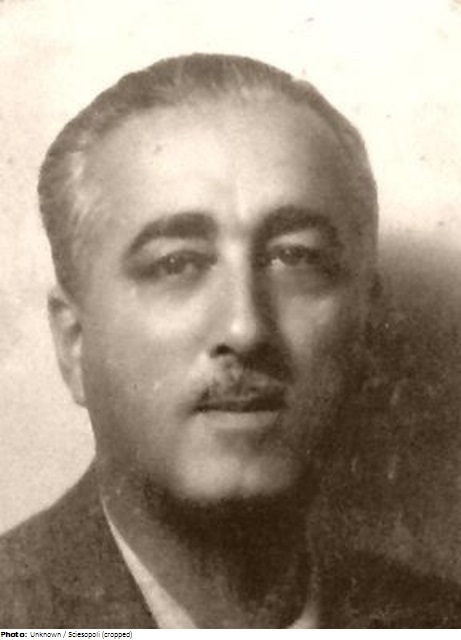Paolo Vietti Violi

Biographical information
| Roles | Competed in Olympic Games |
|---|---|
| Sex | Male |
| Full name | Paolo•Vietti Violi |
| Used name | Paolo•Vietti Violi |
| Born | 20 June 1882 in Grandson, Vaud (SUI) |
| Died | 25 December 1965 (aged 83 years 6 months 5 days) in Vogogna, Verbano-Cusio-Ossola (ITA) |
| NOC |  Italy Italy |
Biography
Italian architect Paolo Vietti Violi was born in Switzerland to Italian parents, and first studied in Geneva, before moving to Paris. In 1914, he settled in Milano where he founded his own architectural studio. He then became well-known as a designer of sports facilities like stadiums and race tracks. He also focused on the infrastructure around sports fields like railways, footways, road links and parking facilities. Vietti Violi worked internationally, with projects in Addis Ababa, Ankara, Istanbul, Adana, Izmir, Belgrade, Sofia, and Valencia.
Among his well-known works were the racecourses of Milano (San Siro Racecourse), Monza (Mirabello Racecourse), Napoli (Agnano Racecourse) and Rimini, as well as trotting racecourses in Milano, Bologna and Firenze. He also designed stadiums in Ankara, Istanbul, Genoa, L’Aquila, Merano, and Saronno. He worked repeatedly over a period of 30 years, especially in Turkey. Vietti Violi’s other projects included hospitals, factories, theaters, basilicas, public facilities, and workers’ villages.
His 1928 entries included, amongst others, the Palazzo dello Sport (today Palazzo delle Scintille), designed in 1922 as a multi-functional building with a huge dome of iron and glass for exhibitions, shows and sporting events an opened in April 1923 with a motor show, the horse race tracks of San Siro, designed in 1912 with neo-classical buildings grandstands but only inaugurated in 1920, of Mirabello, designed according to the English cottage style or a Norman farmhouse and opened in 1925, and of Capannelle in Roma, rebuilt in 1926 inspired by the style of Art Deco, as well as the NAFTA Stadium, designed in 1912 but only inaugurated in 1927 with heavily overhanging bleachers made of reinforced concrete, which is now, after a complete reconstruction in 1980s called Stadio Giacomo Carlini. The Cavallerizza in Milan (1929) remained a plan as well as the Centro polisportivo” for Rome, a competition design from 1926.
S.I.R.E. (Società Incremento Razze Equine) was founded in 1919 as a society for the promotion of horse breeding. In 1921, this company and S.I.A.S., the Association for the Promotion of Automobile and Sports, were granted right of use in a large part of the former Royal Park. Construction began in 1922 for a 14 km long racetrack with four curves and three straights. The course was changed again shortly thereafter to preserve the trees of the park. Nevertheless, the first races were held in 1922. In 1938, the route was modified again. The leaders behind the construction of the track were Arturo Mercanti and Silvio Crespi, both former presidents of the Milan Automobile Club. The architect was Alfredo Rosselli in collaboration with the civil engineer Piero Puricelli. At the same time (1922-24), the Hippodrome was commissioned by S.I.R.E. adjacent to the race track. It is unclear why the entry was associated with S.I.R.E. and not with S.I.A.S. The Hippodrome was one of the projects submitted by Paolo Vietti Violi. However, the catalog of the art exhibition clearly refers to the Autodrome de Monza.
Results
| Games | Discipline (Sport) / Event | NOC / Team | Pos | Medal | As | |
|---|---|---|---|---|---|---|
| 1928 Summer Olympics | Art Competitions |  ITA ITA |
Paolo Vietti Violi | |||
| Architecture, Further Entries, Open (Olympic) | ||||||
| Architecture, Further Entries, Open (Olympic) | ||||||
| Architecture, Further Entries, Open (Olympic) | ||||||
| Architecture, Further Entries, Open (Olympic) | ||||||
| Architecture, Further Entries, Open (Olympic) | ||||||
| Architecture, Further Entries, Open (Olympic) | ||||||
| Architecture, Further Entries, Open (Olympic) |